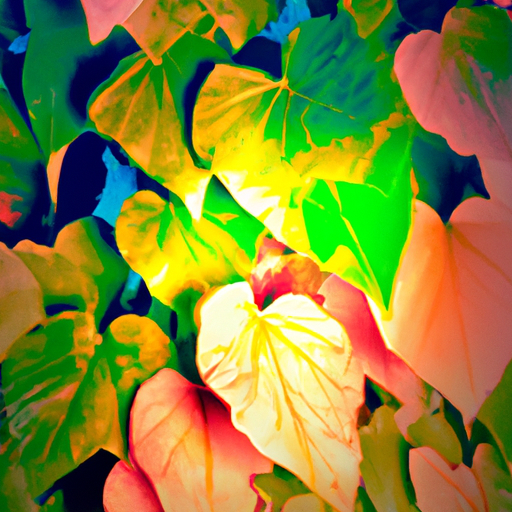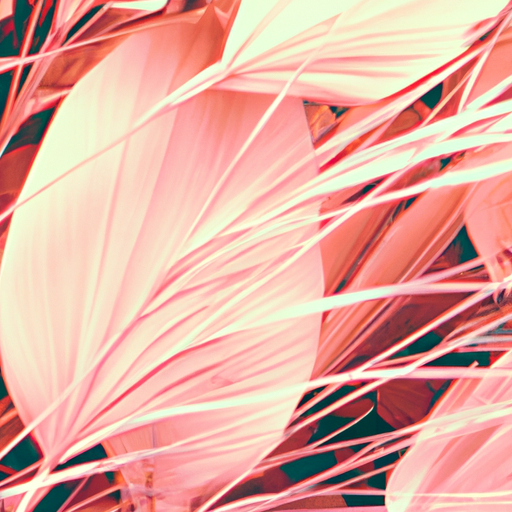
-
Table of Contents
Nature as Artistic Inspiration in Design

Art and design have always been influenced by the world around us. From ancient cave paintings to modern architecture, nature has served as a constant source of inspiration for artists and designers. The intricate patterns, vibrant colors, and harmonious forms found in nature have captivated creative minds for centuries. In this article, we will explore how nature inspires and informs design, and how designers can harness the power of nature to create compelling and sustainable designs.
The Beauty of Nature
Nature is a treasure trove of beauty and inspiration. From the delicate petals of a flower to the majestic landscapes of mountains and oceans, nature offers an endless array of visual delights. Artists and designers have long been drawn to the beauty of nature, using it as a starting point for their creative endeavors.
One example of nature’s influence on design is the Art Nouveau movement of the late 19th and early 20th centuries. Art Nouveau artists, such as Alphonse Mucha and Louis Comfort Tiffany, drew inspiration from the organic forms and flowing lines found in nature. Their designs featured intricate floral motifs, curvilinear shapes, and a sense of movement that mirrored the natural world.
Another example is the work of architect Frank Lloyd Wright. Wright believed in designing buildings that harmonized with their natural surroundings. His famous Fallingwater house, built in 1935, is a prime example of this philosophy. The house is seamlessly integrated into the surrounding landscape, with cantilevered balconies that seem to float above the waterfall below. Wright’s designs were not only visually stunning but also environmentally conscious, showcasing the potential for sustainable design inspired by nature.
Biophilic Design
Biophilic design is an approach to architecture and interior design that seeks to connect people with nature. It recognizes the innate human need to be surrounded by natural elements and incorporates them into the built environment. Biophilic design has been shown to have numerous benefits, including improved well-being, increased productivity, and reduced stress levels.
One example of biophilic design is the Amazon Spheres in Seattle. These three interconnected glass domes serve as a workspace for Amazon employees and are filled with over 40,000 plants from around the world. The Spheres provide a lush and calming environment for employees, fostering creativity and well-being.
Another example is the Bosco Verticale (Vertical Forest) in Milan, Italy. Designed by architect Stefano Boeri, the Bosco Verticale is a pair of residential towers covered in over 900 trees and 20,000 plants. The towers not only provide a stunning visual spectacle but also help to improve air quality and reduce energy consumption.
Patterns and Textures in Nature
Nature is not only a source of visual inspiration but also a rich repository of patterns and textures. From the intricate veins of a leaf to the rough bark of a tree, nature offers a wealth of textures that can be translated into design.
One example of nature-inspired textures in design is the work of textile designer Maharam. Maharam collaborated with Dutch designer Hella Jongerius to create a collection of fabrics inspired by the patterns and textures found in nature. The fabrics feature organic motifs, such as leaves and branches, and incorporate a variety of textures, from smooth to rough.
Another example is the work of industrial designer Ross Lovegrove. Lovegrove often looks to nature for inspiration, studying the forms and structures of plants and animals. His designs, such as the Go chair for Bernhardt Design, feature organic shapes and textures that evoke a sense of natural beauty.
Sustainability and Biomimicry
Nature not only inspires design but also provides valuable lessons in sustainability. Biomimicry is an approach to design that seeks to emulate nature’s strategies and processes to create sustainable solutions. By studying the way nature solves problems, designers can develop innovative and eco-friendly designs.
One example of biomimicry in design is the Eastgate Centre in Harare, Zimbabwe. Designed by architect Mick Pearce, the building is inspired by the cooling system of termite mounds. The building uses natural ventilation and passive cooling techniques to maintain a comfortable temperature, reducing the need for air conditioning and minimizing energy consumption.
Another example is the Velcro fastener, which was inspired by the burrs that stick to clothing and animal fur. Swiss engineer George de Mestral noticed the burrs’ ability to cling to surfaces and developed a hook-and-loop fastening system based on this observation. Velcro is now widely used in various industries, providing a reusable and versatile fastening solution.
Conclusion
Nature has always been a powerful source of inspiration for artists and designers. Its beauty, patterns, textures, and sustainable strategies offer endless possibilities for creative exploration. From the Art Nouveau movement to biophilic design and biomimicry, nature continues to shape and inform the world of design.
By embracing nature as a muse, designers can create compelling and sustainable designs that not only captivate the eye but also contribute to a healthier and more harmonious world. Whether it’s through incorporating natural elements into the built environment, drawing inspiration from patterns and textures found in nature, or emulating nature’s sustainable strategies, nature will always be a timeless and invaluable source of artistic inspiration in design.
